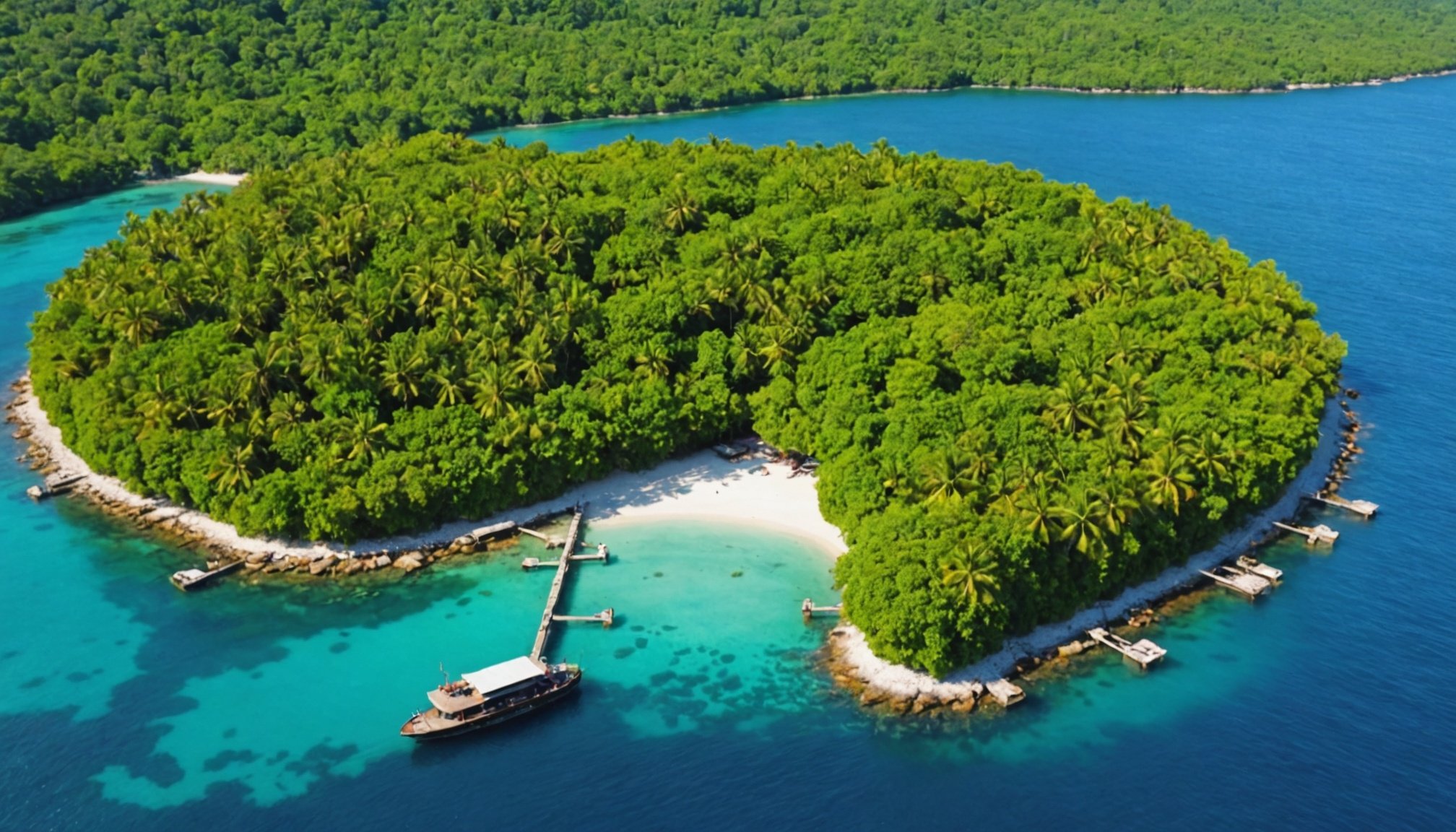Importance of Eco-Friendly Tourism
Embracing eco-tourism is crucial for minimizing our environmental impact while supporting local economies. Eco-tourism, or sustainable tourism, focuses on responsible travel that conserves the environment and improves the well-being of local people. It’s about making travel decisions that reflect environmental consciousness and sustainable practices. By minimizing negative environmental impact, eco-tourism promotes biodiversity, cultural respect, and ecological balance.
Global trends highlight a significant rise in demand for sustainable travel options. Travellers are increasingly opting for destinations and activities that support sustainable tourism ideals. These choices are helping to foster a more eco-conscious travel industry and set a precedent for future travel developments.
Also to discover : Navigating UK Property Taxes: The Ultimate Real Estate Investor’s Handbook
The impact of eco-tourism on local communities and ecosystems can be profound. It aids in preserving natural landscapes and wildlife, while also offering economic benefits to local populations. Communities often gain from increased employment opportunities and cultural exchange, as they share their unique traditions and knowledge with visitors. In turn, this fosters a sense of pride and incentive to maintain and protect their surroundings, ensuring longevity for both the environment and their heritage.
Strategies for Developing Eco-Friendly Tourism Destinations
Developing eco-friendly tourism involves strategies to ensure responsible tourism that aligns with environmental conservation and sustainable practices. One effective approach is utilizing local resources efficiently to minimize the ecological footprint. This includes sourcing materials locally and encouraging tourists to engage in activities that support the environment.
Also to read : Illuminating the Path to Sustainability: A Comprehensive Guide to Energy-Efficient Lighting for Large UK Commercial Properties
Integrating renewable energy sources is crucial for reducing reliance on fossil fuels. Tourism facilities adopting solar, wind, or hydroelectric power can significantly decrease their environmental impact. Such initiatives not only help in conserving energy but also serve as educational showcases for visitors, promoting awareness of renewable energy benefits.
Conservation efforts and wildlife protection are integral to eco-tourism strategies. By supporting initiatives such as habitat restoration and species protection, tourism entities can play a part in preserving biodiversity. Additionally, encouraging tourists to participate in conservation activities creates a sense of responsibility towards the environment.
Implementing these eco-friendly strategies requires comprehensive planning and commitment from all stakeholders involved, ensuring long-term sustainability for tourism destinations. As more regions adopt these methods, the global tourism industry continues to move towards a future where responsible travel is the norm, fostering an environment where nature and tourism coexist harmoniously.
Case Studies of Successful Eco-Friendly Destinations
Exploring success stories in eco-tourism provides valuable insights into effective practices. Notable examples, such as Costa Rica and Bhutan, have set precedence through their unwavering commitment to sustainable tourism models. Eco-tourism examples in these regions highlight a blend of conservation efforts and community involvement, showcasing how locals become stewards of their environments.
Costa Rica is celebrated for its dedicated eco-tourism strategies. The country has implemented policies protecting about 25% of its land through national parks and reserves. These efforts preserve biodiversity while promoting responsible tourism. Visitors are encouraged to engage in experiences emphasizing respect for nature, such as bird watching and hiking trails.
In Bhutan, the philosophy of “Gross National Happiness” integrates environmental and cultural sustainability. With a strict policy of high-value, low-impact tourism, Bhutan ensures minimal environmental impact while providing authentic experiences. This unique approach not only preserves natural landscapes but enriches tourists’ cultural understanding.
The best practices from these destinations highlight the importance of nurturing local ecosystems and cultures to attract conscientious travelers. These case studies serve as blueprints for other regions aiming to replicate eco-friendly initiatives by adapting strategies like community-based conservation and sustainable infrastructure development.
Engaging Stakeholders in Sustainable Tourism Practices
Successful sustainable tourism relies on active stakeholder engagement. Local communities play a critical role in shaping tourism practices, ensuring that their cultural values and ecological priorities are respected. By involving residents in tourism planning, these communities gain ownership over projects, resulting in practices that are both effective and harmonious with local needs.
Collaboration is essential. Cooperation between businesses, governments, and nonprofits allows for shared insights and resources. This multi-faceted approach helps to bridge gaps and create comprehensive strategies that benefit both the environment and local economies. When all parties are invested, eco-tourism initiatives are more likely to succeed and be sustained over time.
Case studies worldwide show how powerful community involvement can be. Projects that include local stakeholders often thrive, demonstrating resilience and adaptability. These models encourage the sharing of responsibilities and resources, fostering a sense of unity and shared goals.
Successful stakeholder partnerships in eco-tourism have resulted in enhanced environmental stewardship and socio-economic benefits. Authentic collaboration ensures that all voices are heard, enabling a collaborative effort in preserving culture and nature. This synergy creates a roadmap for other regions looking to implement effective and inclusive sustainable tourism practices.
Measuring Success in Eco-Friendly Tourism Developments
Effective evaluation of eco-friendly tourism relies on precise impact assessment and the application of sustainability metrics. Key performance indicators (KPIs) offer vital insight into the effectiveness of eco-tourism initiatives and can include metrics like carbon footprint reduction, biodiversity preservation, and economic benefits to local communities. Having clear metrics aids in measuring the environmental practices‘ viability and guiding future improvements.
Technology plays a crucial role in tourism evaluation. Advanced tools like Geographic Information Systems (GIS) and remote sensing enable the mapping of environmental changes and help in real-time monitoring of environmental impact. These tools provide detailed data, which are essential for making informed decisions regarding sustainable tourism.
Feedback from visitors and local populations is equally important. Surveys, interviews, and community meetings provide qualitative data, offering perspectives that quantitative measures might overlook. This feedback loop ensures that eco-tourism strategies remain adaptable and relevant, addressing both visitor satisfaction and community needs.
Ultimately, combining sustainability metrics with technology and community input results in a comprehensive approach toward assessing the success of eco-friendly tourism initiatives. This ensures solutions remain beneficial to both people and the planet.
Resources for Implementing Eco-Friendly Tourism Strategies
To successfully implement eco-friendly tourism strategies, numerous guidelines and resources are available. These provide essential frameworks and toolkits for tourism planners and businesses aiming to adopt sustainable practices. Environmental organizations such as the Global Sustainable Tourism Council offer comprehensive sustainable tourism resources that guide stakeholders in minimizing environmental impact.
Recommended toolkits often include practical steps for integrating sustainable practices, like efficient energy use or waste reduction techniques. They are designed to support the implementation of sustainable tourism by providing case studies and best practice examples. Importantly, these resources facilitate the translation of theory into actionable strategies tailored for diverse tourism contexts.
Continuous education and training in sustainability practices are pivotal to maintaining engagement and knowledge updates among stakeholders. Interactive workshops, webinars, and certified courses ensure stakeholders are well-versed in responsible tourism methodologies. This sustains the momentum needed for long-term success and adaptability in the evolving tourism landscape.
By utilizing available toolkits and maintaining an ongoing commitment to education, tourism stakeholders can effectively contribute to the global shift towards sustainable tourism, ensuring the protection and enrichment of natural and cultural resources for future generations.

